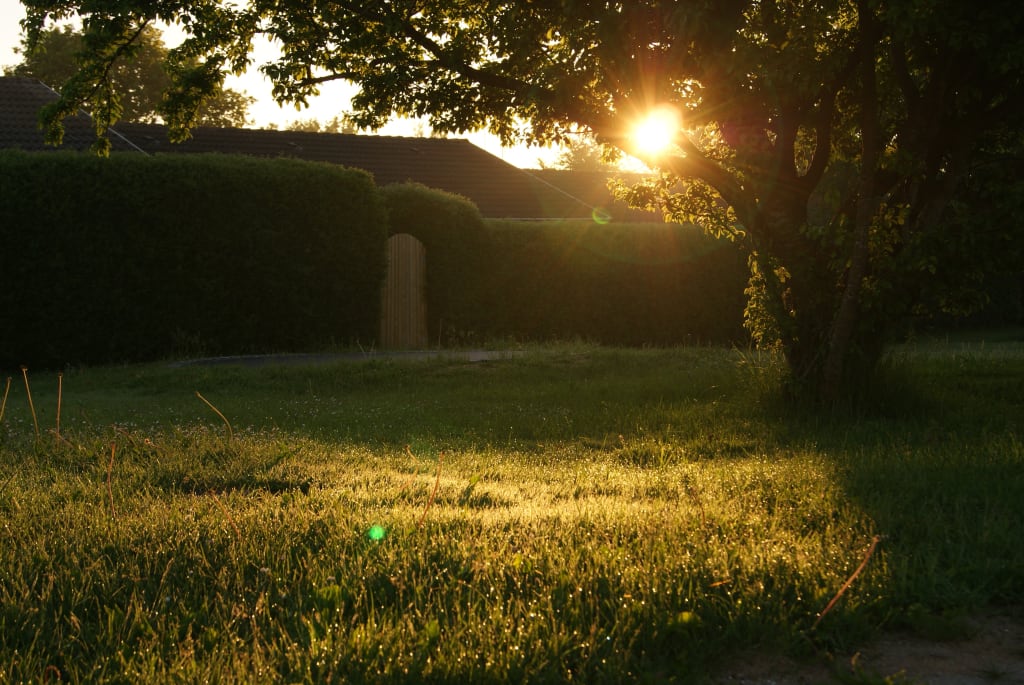The Self-Sufficient Backyard
Green Thumb

The Self-Sufficient Backyard Master Guide: How to Create Your Own little Slice of Paradise
The Self-Sufficient Backyard is a dream come true for many gardeners and home owners alike. This master guide will show you how to create your own little slice of paradise right in your backyard. With a few simple steps and a little bit of elbow grease, you can easily transform your outdoor space into an oasis of beauty and sustainability.
Why you should create your own little slice of paradise
Having your own little slice of paradise in your backyard can be a great way to reduce your carbon footprint, save money, and enjoy the outdoors. Not only will you be able to have your own private space where you can relax and enjoy nature, but you can also have a self-sufficient and sustainable environment. If you have the time and inclination, creating a self-sufficient backyard paradise is not only rewarding, but it can give you a sense of accomplishment. And don't forget, you'll also get to develop your green thumb along the way!
The beauty of self-sufficiency is that you can be as creative as you want. You can grow your own food, build your own outdoor living spaces, and even produce your own energy. Plus, since you’re using natural resources and materials, you're reducing your environmental impact while enjoying the fruits of your labor. With the right combination of skills and knowledge, you can create your very own oasis of peace and tranquility in your backyard.
What you need to get started
Creating a self-sufficient backyard requires some preparation and planning, as well as a bit of a green thumb. Here are the things you will need to get started on your journey:
1. Space: You’ll need enough space for your backyard to grow food and host plants. Measure your yard or plot of land, then plan your layout and create a garden plan to determine what crops you can grow and where.
2. Seeds: Depending on what crops you plan to grow, you may need to purchase or gather seeds. Consider buying organic or heirloom seeds that are designed to thrive in the climate of your area.
3. Soil: Healthy soil is essential to having a thriving garden. Get soil tested to see what it needs in order to be properly balanced. You may need to add compost, fertilizer, or other materials to improve the quality of the soil.
4. Watering: A drip irrigation system is great for watering your crops without wasting too much water. You may also want to consider collecting rainwater for watering your plants.
5. Tools: Having the right tools on hand is key for keeping up with your garden and harvesting your crops. Look for tools like pruning shears, shovels, hoes, and trowels.
6. Green Thumb: While having a green thumb isn’t necessary for growing food, it certainly helps. Spend time learning about gardening, from which crops thrive in your area to how to care for your soil and plants. With knowledge and practice, you can cultivate a healthy, self-sufficient garden.
How to create your own self-sufficient backyard
1. Start by planning. Before you begin creating your self-sufficient backyard, it is important to create a plan and think through what you would like to do. Consider the space you have available and what types of plants, flowers, and vegetables you would like to grow. Think about how much time and energy you want to dedicate to this project and make sure your goals are achievable.
2. Choose the right plants. Selecting the right plants for your backyard is key for creating a self-sufficient ecosystem. Choose native species that can thrive in your area and determine which plants will work best for your climate and soil type. Make sure to research any plant before buying it to ensure it can grow in your location.
3. Practice companion planting. Companion planting is a technique used to maximize the benefits of growing multiple types of plants together. This method helps reduce pest problems, increase pollination, and improve soil fertility.
4. Utilize natural pest control methods. To keep pests out of your self-sufficient backyard, utilize natural methods such as planting specific flowers or herbs that will repel them or introducing beneficial insects such as ladybugs or praying mantis. You can also build physical barriers such as fences and trellises to keep out certain pests.
5. Compost. Composting is an essential part of creating a self-sufficient backyard as it helps nourish the soil and increase its fertility, leading to healthier plants and more abundant harvests. It is easy to set up a compost bin in your backyard and you can compost almost any organic material such as kitchen scraps, grass clippings, leaves, and egg shells.
6. Collect rainwater. Utilizing rainwater is another great way to help your backyard become more self-sufficient as it helps reduce water bills and minimize waste. You can collect rainwater from roof runoff or from other catchment systems.
Creating a self-sufficient backyard is a rewarding experience that provides a steady supply of fresh food, herbs, and flowers for you to enjoy all year round. By following these steps, you can create a garden oasis of your own that will bring joy and abundance into your life.
Tips for making your backyard more self-sufficient
1. Plant a variety of fruit, vegetable, and herb plants. Planting a variety of plants will ensure that you get the most out of your garden. Growing your own food is a great way to ensure that you are getting quality produce without all the added chemicals that come with store bought food.
2. Utilize rainwater catchment systems. Collecting rainwater for use in your garden or for other household needs can help save money and conserve resources. Investing in rain barrels or cisterns is a great way to do this.
3. Compost your kitchen scraps and yard waste. Composting helps reduce the amount of garbage in landfills and provides nutrients to your soil. It’s an easy way to recycle materials back into the earth and have a nutrient rich soil for your garden plants to thrive.
4. Install energy-saving features. There are many energy-saving features you can add to your backyard such as solar panels, rain barrels, and even wind turbines. Investing in these features can save you money on electricity bills while helping the environment.
5. Grow cover crops. Cover crops are an excellent way to keep the soil fertile and reduce erosion. Growing cover crops can also help to attract beneficial insects and birds which will help keep pests at bay.
6. Introduce bee-friendly plants into your garden. Adding bee-friendly plants such as clover, lavender, and sunflowers will attract bees and other pollinators which are essential for a healthy garden and ecosystem.
7. Incorporate native plants into your garden. Native plants are well adapted to the climate in your region and require less water and maintenance than non-native plants. Native plants also provide essential habitat for wildlife, so incorporating them into your garden can create a truly self-sufficient space.
FAQs about self-sufficient backyards
Q: What is a self-sufficient backyard?
A: A self-sufficient backyard is one that is designed to produce its own food, energy, water, and other resources sustainably, without relying on outside sources. This type of backyard requires careful planning and execution, but it can be done in any space with enough dedication.
Q: What are some benefits of creating a self-sufficient backyard?
A: A self-sufficient backyard offers many benefits, such as providing healthy, organic food for your family, saving money on utility bills, helping the environment by reducing your carbon footprint, and creating an aesthetically pleasing living space.
Q: What types of plants should I grow in my self-sufficient backyard?
A: Depending on your climate and the size of your yard, there are many plants you can choose from to create a self-sufficient backyard. Consider planting vegetables and herbs, fruits like apples and pears, and other edible plants like berry bushes and grape vines. You can also include native plants that help support local ecosystems.
Q: How do I make sure my self-sufficient backyard is sustainable?
A: Sustainability is key when creating a self-sufficient backyard. Make sure to consider the best practices for sustainability when designing your space. For example, use composting techniques to reduce food waste, install rainwater harvesting systems to collect and store water, and opt for renewable energy sources like solar panels.
Q: What are some other ways I can make my backyard more self-sufficient?
A: There are many other ways to make your backyard more self-sufficient. Consider installing greywater systems to recycle wastewater for irrigation, planting shade trees to reduce energy costs, or setting up aquaponic systems for a closed-loop food production system.
To know the best way to have a self efficient backyard click here
About the Creator
RYAN DANIEL DALY
I have had health problems, It all started with painful spasms and digestive issues that had caused me to lose 35 pounds. I went to several doctors but they could not find the cause. I now have a greater compassion for people that suffer!






Comments
There are no comments for this story
Be the first to respond and start the conversation.